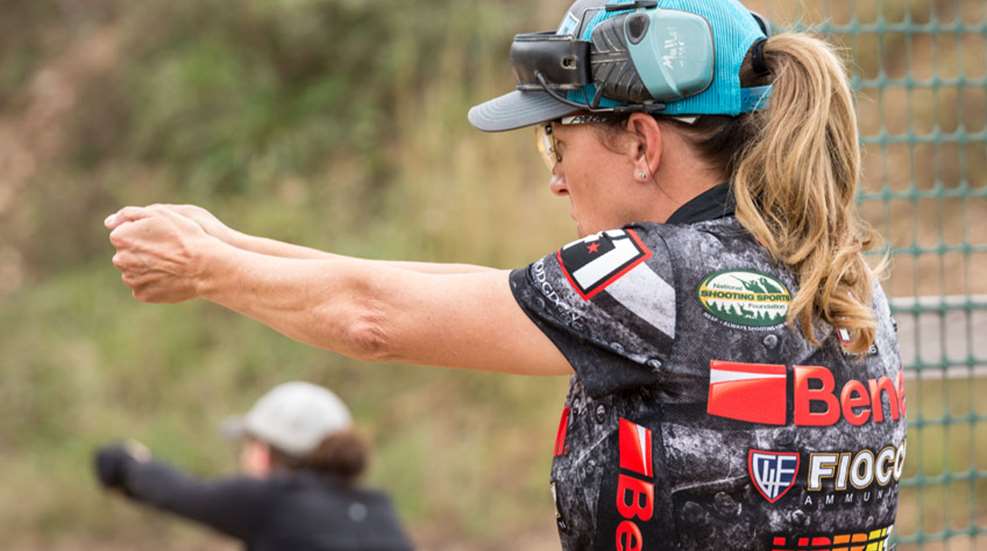
Even professional shooters use visualization to help plan their progress through a course of fire in a match. The same process can be used to your benefit for armed self-defense.
If I suggested to you we can use visualization and imagination to enhance our personal-defense abilities, your first thought might be that I’m going for New Age stuff in my advancing years. However, I’ll bet that there’s not a fan of Western-style movies out there who hasn’t imagined sitting astride a big sorrel gelding in some green mountain meadow with a big-ring Winchester in-hand, screaming “Fill your hand, you son-of-a…”
OK, so maybe that’s not exactly the imagining that I had in mind, but it’s a place to start. Actually, there’s nothing New Age about visualization—athletes have been using it for years. A definition that best pertains to us is, “Guided visualization or imagery is purposely rehearsing a skill, routine or performance in your mind’s eye to program your body for success.”
I don’t, for a minute, think that these techniques can take the place of training and practice. But, I do think they can enhance our training and practice to the point where we get as much as possible from the time spent honing our personal-defense skills.
I use the term “visualization” to refer to all of those various gun-handling skills that must become second nature to us. In an actual deadly encounter, our focus should be on the threat and our efforts to deal with that threat. If we have to focus on getting our gun out and getting it ready to fire, we will likely be unable to keep up with the bad guys and what they are doing. We really need to be able to perform a quick pistol presentation, speed and/or tactical reloads and the various malfunction clearances without spending much time thinking about it.
We go to a good defensive-shooting school to learn how to do these things quickly and correctly. Then, we set aside regular times to practice these skills until we can do them without fumbling. Finally, in our spare time (commuting to work, mowing the yard, cleaning the house, etc.), we visualize ourselves performing these skills properly and quickly. Visualization helps us remember how to do it right and also gives us the confidence to do it properly.
For me, imagination relates to defensive scenarios. We should envision those defensive situations that are most likely to happen given our lifestyle and location. We can imagine the proper defensive techniques that each scenario might call for. We can visualize using those techniques to deal with the potential threat.
Of course, one of the dangers is allowing ourselves to daydream instead of truly imagining. Daydreaming would be creating scenarios in which we invariably come out as the hero, untouched, unharmed and heralded by all. While entertaining, it is unproductive. Instead, imagine a scenario and how you might handle it. Then try to imagine all of the things that could possibly go wrong with the way you plan to handle it. Now, what are you going to do about that?
Suppose we are dealing with a home invasion. You imagine that the crooks kick in your front door while you are sitting in your favorite chair. And you imagine getting to your defensive firearm, which, given your location, shouldn’t take long at all. Where is the nearest cover and how do you use it?
How does that scenario differ if the home invasion occurs at night after you have gone to bed? Would it be different if you happen to be in the bathroom when the attack occurs? You should see that the possibilities are almost endless. But, the more you consider defensive scenarios, the better prepared you will be and the better chance that you have a good defensive plan in place.
I have heard it said that no plan will survive initial contact with the enemy. What that may really mean is that the plan wasn’t a very good plan to begin with, or the planning wasn’t thorough enough. In most cases, we can take time to examine a scenario and imagine the various ways that things can go wrong and what to do about it.
Suppose you walk in on a robbery in a convenience store. At what point could you have just ducked out the door and called 911? Is there adequate cover nearby and, if so, how do you make use of it? What if there is more than one robber and they are scattered around the store? What if your spouse is with you? What if you are actively engaged in taking and/or returning fire when the police arrive? We could go on and on, just changing different aspects of this scenario, for a quite a long time.
When you consider all of the forms that a criminal attack can take, it may be that visualization and imagination are as important as your ability to draw and hit a target. The worst thing that can happen is being surprised to the point that there is a significant time lapse before you begin to take action. Visualization and imagination help you to build your personal-defense plan and that plan helps you to reduce your response time in dealing with a criminal attack.
Getting good training and then practicing what you’ve been taught is the foundation for a solid personal defense. Visualization and imagination help keep those skills honed and fresh so you will be physically and mentally prepared to deal with the attack when it occurs.



































